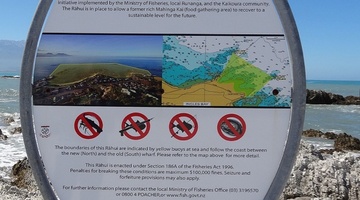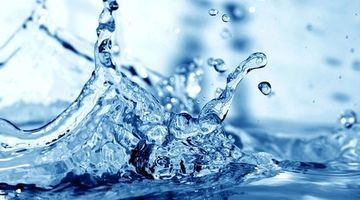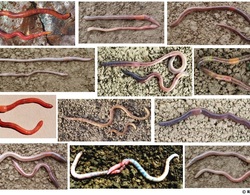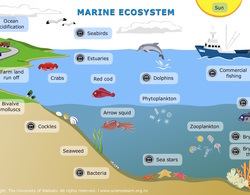

Butterflies are the exhibitionists of the insect world. For many invertebrates, camouflage is the best defence against predators, so how do brightly coloured butterflies protect themselves? The ...
READ MORE

People like to live near estuaries. In pre-European times, estuaries were favourite places for Māori to gather – particularly to harvest and enjoy kaimoana. Today, there are major settlements ...
READ MORE

Estuaries are extremely valuable. They: are nurseries – breeding grounds for fish and birds maintain the health of coastal fisheries and waters are a buffer between land and sea – protecting the ...
READ MORE

In this web quest activity, groups of students use the web links provided to study the clean-up of sites contaminated by hazardous waste. They present their findings to the class. By the end of ...
READ MORE

In this activity, students consider some of the ethical issues involved with keeping earthworms (and other animals) captive in a classroom setting. By the end of this activity, students should be ...
READ MORE

Insects are one of the largest and most diverse groups of creatures on Earth. There are more than a million known species, yet they all share common physical characteristics. In this activity ...
READ MORE

Be part of a worldwide movement and use Global Earth Challenge to submit or classify photos to help our planet’s environment and human health. Global Earth Challenge is a citizen science campaign ...
READ MORE

Marine Metre Squared is a New Zealand citizen science project that supports communities to monitor their local seashore. The project has been designed to provide meaningful, valid environmental ...
READ MORE

iNaturalist logs hundreds of thousands of photos of flora, fauna and fungi. There are even sound recordings too. Each is described and geo located. iNaturalist is used by citizens and scientists ...
READ MORE

There are over 150,000 substances approved for use in Aotearoa New Zealand that contain an estimated 30,000 chemicals. We use chemicals on a daily basis – they’re all around us. Chemicals are not ...
READ MORE

To most of us, one earthworm resembles another. Although earthworms do have common characteristics, species differ widely in their size, skin colour and in the roles they play in the soil ...
READ MORE

Water has unusual properties that make it different to other liquids. It is the only common substance that is naturally found as a solid (ice), liquid (water) or gas (water vapour). Water has the ...
READ MORE
NIWA's Maori development officer, Apanui Skipper and Weno Iti, the Te Kūwaha manager (NIWA Māori Development Centre), describe what kaitiakitanga means to them.
READ MORE
Immediately following the grounding of the Rena on the Astrolabe Reef, the Bay of Plenty Polytechnic and the University of Waikato formed a marine response team. This team surveyed local marine ...
READ MORE
Associate Professor of Toxicology at Lincoln University, Dr Ravi Gooneratne, describes how the bioavailability of a chemical affects the level of pollution an organism is exposed to.
READ MORE

This timeline explores the history and science of mammalian pest control in New Zealand. A full transcript is underneath the timeline.
READ MORE

Learn more about introduced and native earthworms in Aotearoa New Zealand. Use the Slideshow menu for further options, including view full screen, and go here for the download option.
READ MORE

Explore this interactive diagram to learn more about life in the sea. Click on the different labels to view short video clips or images about different parts of the marine ecosystem. Select here ...
READ MORE